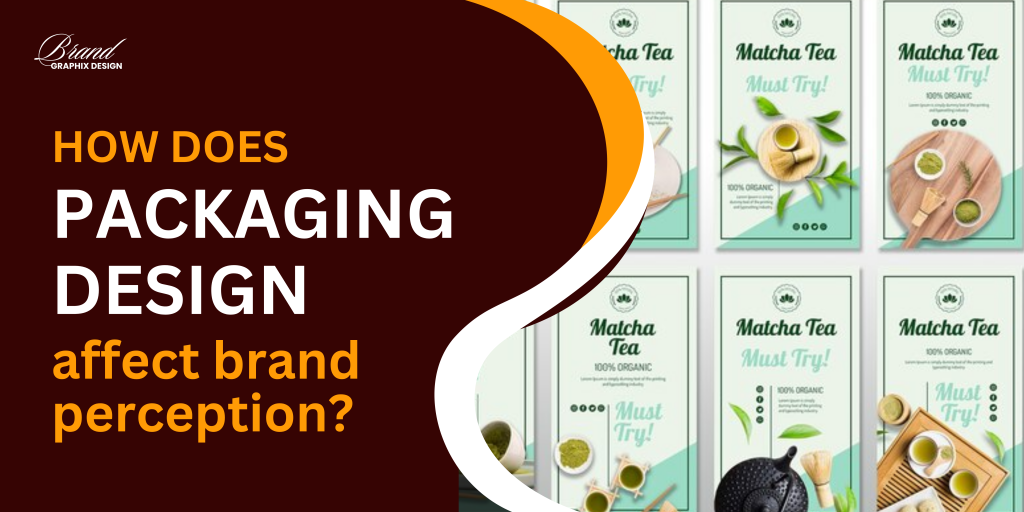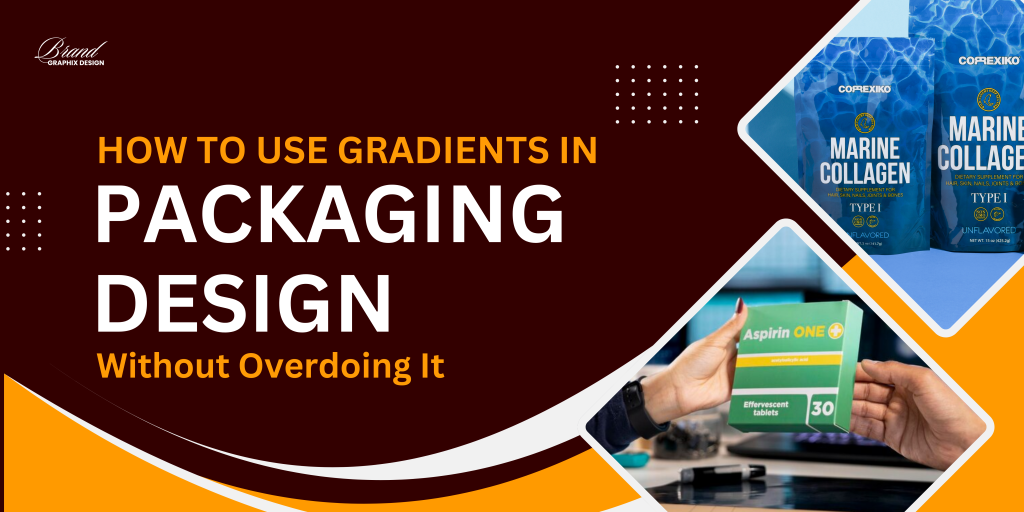1. First Impressions Matter
The first impression a consumer has of your product often comes from its packaging design. When a customer sees a product on the shelf or in an online store, the packaging is the first element that catches their eye. A well-designed package can convey a sense of quality and professionalism, making it more likely for the customer to engage with the product. On the other hand, poor packaging design may give the impression that the product inside is of inferior quality, leading to hesitation or rejection. This initial visual impact is crucial in influencing whether a potential customer will choose your product over others. A strong and appealing packaging design can differentiate your brand from competitors and foster a sense of trust and reliability, making packaging design an essential factor in shaping brand perception.
2. Reflecting Brand Identity
Packaging design is an important aspect of reflecting and communicating a brand’s identity. The colors, shapes, fonts, and imagery used in the packaging should be aligned with the brand’s values and messaging. For example, a luxury brand might use minimalist packaging with elegant fonts and sophisticated colors to reflect exclusivity and high quality. Conversely, an eco-friendly brand might choose recyclable materials and earthy tones to communicate sustainability and environmental responsibility. When packaging aligns with brand identity, it helps create a cohesive and recognizable image that customers can identify with. This consistency across all touchpoints, from packaging to marketing materials, strengthens brand recognition and ensures that the brand’s message resonates with the target audience, reinforcing their perception of the brand’s core values.
3. Evoking Emotions and Connection
Packaging design has the power to evoke emotions and create a connection with consumers. A thoughtfully designed package can appeal to a customer’s sense of nostalgia, excitement, or joy. For example, brands often use vibrant, playful designs for children’s products to capture attention and make the experience fun. Similarly, a premium brand might opt for luxurious packaging with intricate details to elicit feelings of indulgence and exclusivity. By evoking positive emotions through design, brands can form a deeper bond with consumers, making them more likely to remember the product and develop loyalty. Emotional connections foster brand affinity, influencing customers’ perceptions of the brand long after the purchase. Therefore, packaging plays a vital role in shaping how consumers feel about a product and, by extension, the brand itself.
4. Trust and Transparency
Packaging design also plays a key role in building trust and transparency between a brand and its customers. Clear and honest labeling on packaging, such as ingredient lists, nutritional facts, and product origin, can help establish credibility and foster a sense of trust. Consumers are increasingly looking for products that are transparent about their contents and production processes. Packaging that highlights certifications like organic, fair trade, or cruelty-free can reinforce a brand’s commitment to ethical practices. On the other hand, misleading or unclear packaging can create doubt and negatively impact a brand’s reputation. By prioritizing transparency in packaging design, brands demonstrate their integrity and commitment to quality, which ultimately strengthens customer loyalty and enhances brand perception.
5. Functional and Practical Design
In addition to aesthetic appeal, the functionality of packaging is a crucial aspect that affects brand perception. Consumers appreciate packaging that is easy to use, opens and closes securely, and offers practical features like resealability or portability. If packaging is difficult to open, cumbersome, or inconvenient, it can lead to frustration and a negative perception of the product, regardless of its quality. On the other hand, well-designed packaging that enhances the user experience can improve customer satisfaction and increase brand loyalty. For example, brands that use eco-friendly, easy-to-recycle materials show a commitment to both practicality and environmental responsibility, which can resonate with eco-conscious consumers. Ultimately, a functional packaging design improves the overall customer experience, enhancing the consumer’s perception of the brand.
6. Differentiation in a Crowded Market
Packaging design plays a significant role in helping brands stand out in a crowded marketplace. With so many competing products on store shelves or online, distinctive packaging can capture consumer attention and influence purchasing decisions. Unique shapes, bold colors, and innovative design elements can make a product more noticeable and memorable. Packaging that tells a story, communicates the product’s benefits, or offers a visual narrative can create differentiation and set the brand apart from its competitors. Effective packaging design helps the brand communicate its unique selling proposition (USP) quickly and clearly, making it easier for consumers to identify with the brand. As a result, strong and distinct packaging contributes to positive brand perception and increases the likelihood that a consumer will choose the product over alternatives.
7. Communicating Quality and Value
Packaging design is an essential tool for communicating both the quality and value of a product. The materials used in packaging, along with its overall design, can send signals about the product’s value. For example, high-end brands often use premium materials like thick cardboard, glossy finishes, or embossed logos to convey luxury and exclusivity. Conversely, brands targeting budget-conscious consumers might opt for simpler packaging that prioritizes cost efficiency without sacrificing brand identity. Well-executed packaging communicates to consumers that the product is worth its price, whether it’s a high-end luxury item or an affordable everyday good. When packaging aligns with the perceived value of the product, it creates a strong sense of trust and reinforces brand perception, making consumers more likely to purchase and recommend the brand.
8. Sustainability and Eco-Friendly Practices
As sustainability becomes an increasingly important factor for consumers, eco-friendly packaging design is having a significant impact on brand perception. Packaging made from recyclable or biodegradable materials signals to consumers that a brand is conscious of its environmental footprint and committed to sustainable practices. Brands that adopt eco-friendly packaging solutions can attract environmentally-conscious customers, who may view the brand as more responsible and ethical. This focus on sustainability can be a powerful differentiator, especially for younger generations who prioritize environmental issues. However, it’s important that brands be transparent about their sustainability efforts and avoid “greenwashing”—misleading consumers about the environmental benefits of their packaging. When done correctly, sustainable packaging design can enhance brand image and foster a positive perception of the brand among eco-conscious consumers.
9. Enhancing Brand Recognition
Packaging design is an essential element in building and reinforcing brand recognition. Consistent use of colors, logos, typography, and other visual elements across packaging helps consumers quickly identify and remember a brand. For example, iconic brands like Coca-Cola and Apple have distinctive packaging that immediately communicates their identity. The more recognizable a brand’s packaging is, the easier it is for consumers to locate the product in-store or online, leading to repeat purchases. Consistency in packaging design across all product lines and marketing materials strengthens the overall brand image and makes the brand more memorable. In this way, packaging design not only helps create initial awareness but also plays a significant role in long-term brand recognition and customer loyalty.
10. Packaging as a Marketing Tool
Packaging design has evolved from simply being a protective container for products to becoming a powerful marketing tool. Today, packaging is often used to promote brand values, showcase product benefits, and engage customers through interactive or creative elements. For example, packaging with QR codes can provide consumers with additional product information, promotional offers, or access to digital content. Innovative and eye-catching packaging can generate word-of-mouth marketing, with customers sharing their experiences on social media or recommending the product to others. Packaging also serves as a medium for storytelling, with brands using visuals and text to convey their mission or product journey. When packaging is used strategically as part of a brand’s marketing efforts, it can have a significant impact on brand perception and help build deeper connections with consumers.
Packaging design plays a crucial role in shaping consumer perceptions of a brand. It influences how customers perceive a product’s quality, value, and alignment with their personal preferences and values. From creating first impressions to conveying brand identity and building trust, the packaging is a reflection of the brand itself. With the right design elements, packaging can evoke emotions, differentiate the brand from competitors, and foster customer loyalty. As sustainability becomes more important to consumers, eco-friendly packaging also plays an increasingly significant role in brand perception. Ultimately, packaging design is more than just a functional necessity; it is a powerful marketing tool that can enhance brand recognition, increase customer engagement, and positively influence purchasing decisions. Brands that invest in thoughtful and strategic packaging design are more likely to succeed in the competitive marketplace.




